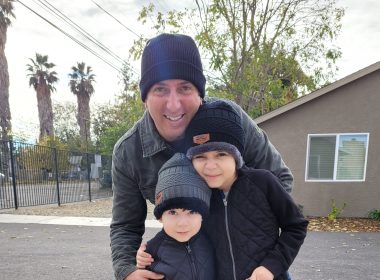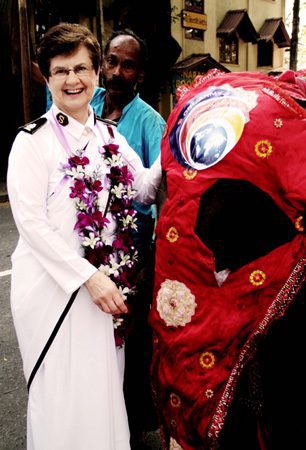 BLANKETS ARE UNLOADED and prepared for distribution to Afghan refugees. |
BY CEDRIC HILLS, MAJOR –
To assess how The Salvation Army could best assist with humanitarian relief operations in Afghanistan, Major Cedric Hills joined others on a fact-finding trip to Afghanistan in December 2002. Here are some of his recollections…
After the fall of the Taliban at the end of 2001, the removal of the burqa symbolized the newfound freedom we anticipated would sweep across Afghanistan. If I was expecting to find a sea of bare faces during my visit to Kabul then I was mistaken. While some have adopted a more relaxed approach (simply wrapping their head and covering their shoulders with a shawl), the burqa is far from dead and, as our week’s activities ran their course, the almost shapeless image of the burqa was to become very significant.
The Minister for Refugees encouraged us to visit a number of refugee camps located around the edges of this large city. Since mid-2002, around two million refugees returned from neighboring countries to Afghanistan.
These families accepted UN grants of about $100 in cash plus two blankets per family and headed home. They spent the money on travel; many returned to find their homes destroyed, communities broken and fields mined. With no possibility of sustaining themselves in rural villages, they migrated towards the major cities.
Estimates place over half a million ‘refugees’ now living in Kabul. They shelter under temporary roofs fashioned from plastic sheeting. They occupy the derelict ruins; walls peppered with bullet holes, bearing the scars of 20 years war with the Soviets and the civil war of the 90’s which decimated huge areas of the city.
Our arrival at each ‘camp’ quickly drew a crowd. When travelling around the world visiting areas of humanitarian disaster I have grown accustomed to being welcomed as the representative of a caring organization. The welcome here was different – sometimes hostile, even angry.
The community elders, while keen to speak with us, were not so eager to answer our probing questions. They didn’t want questions; their patience for posing for photographs was spent; they wanted assistance and made it clear they felt the world was passing them by. When you have virtually no possessions, are struggling to find enough daily food for your family, have just two blankets to keep your family of 8 or 10 people warm and are trying vainly to keep the biting wind and rain out of the derelict ruins that you now know as ‘home’, it’s hardly surprising that making polite conversation is low on the agenda.
We had to show that someone cared – that we weren’t just here to look. Actions speak louder than words and the refugee spokesman had not asked for much. When asked to prioritize their needs he had not asked for a car or TV, simply for blankets to keep warm.
Contacts at the Norwegian Church Aid revealed we could purchase thick, handmade quilts for $8 each. Widows in small cooperatives make these, and for each blanket sold the widow would receive about $2. That’s a useful income in a country where the rate for a day’s casual labor is $1. For us this meant a double blessing. We could help to keep a family warm and help provide support for a widow and her family.
We immediately placed an order for 500 blankets. The elders in two camps were revisited and families in each community listed. Distributing the blankets was not easy. The Minister for Refugees provided his staff members to assist; they arranged for police to keep order and even members of the multi-national International Stabilization Force came along to assure our safety. But in this war-ravaged place, even a simple blanket is a prized possession and many, many more people pressed towards us than we could assist.
Two days after delivering the blankets, we prepared to head home. A small number of people gathered – we had grown used to this and anticipated the request for alms. We were seated in the car, ready to close the door, when a woman, shrouded in her burqa, put her head into our vehicle. We assumed she was a rather bold beggar. Attempting to push her out of the car so that we could close the door and leave, we were surprised at her determination to get in. Only when she lifted her veil did we see her face, the smiling face of the lady who had so kindly and gently cleaned the home where we had stayed this week. She had served us generously and warmly, and we embraced her and thanked her for her kindness to us. She was not a faceless form, but someone who had become a friend. I wondered how she must have felt when we had tried to push her away.
My memories of this trip – not only burqas, bullet holes and blankets – not just faceless forms – but people who have suffered much and who need the world to show with action that we still care.







